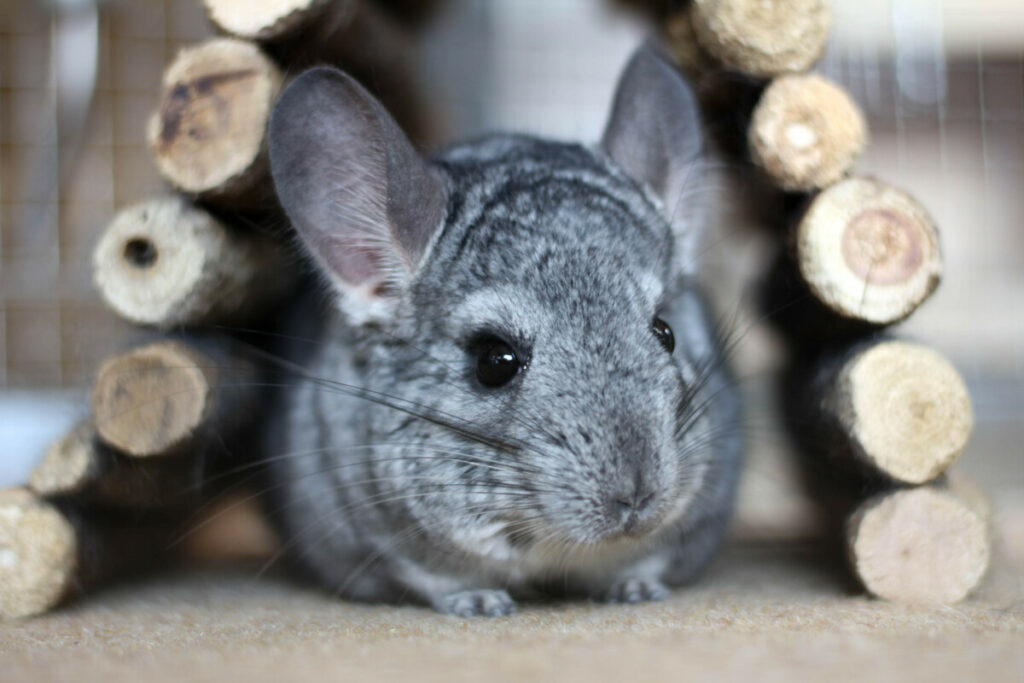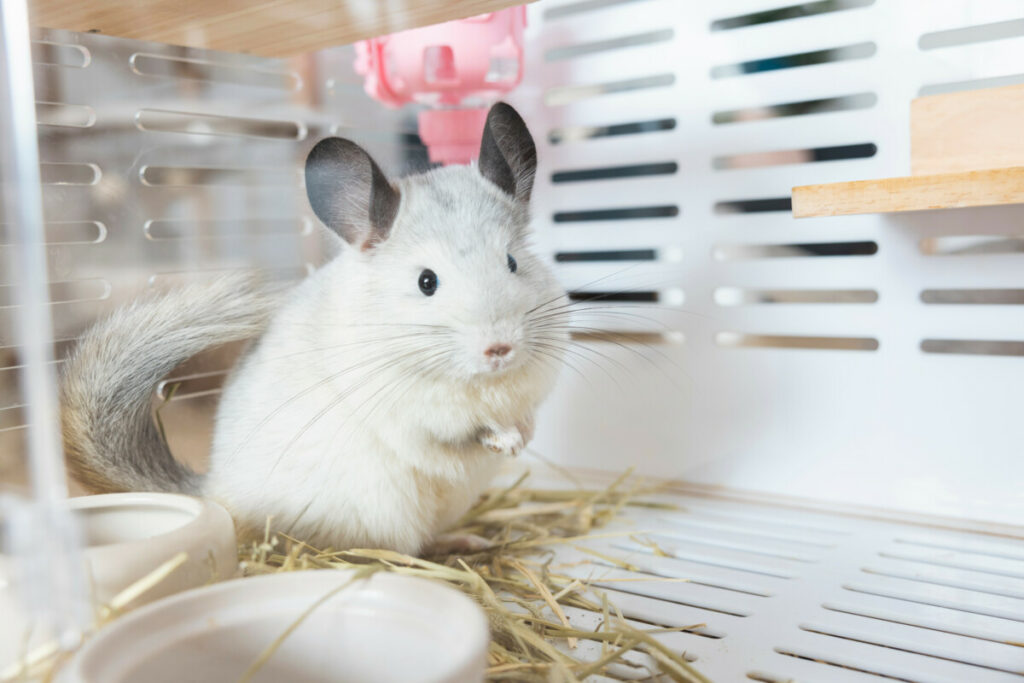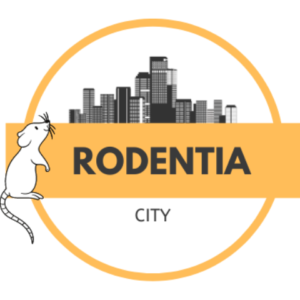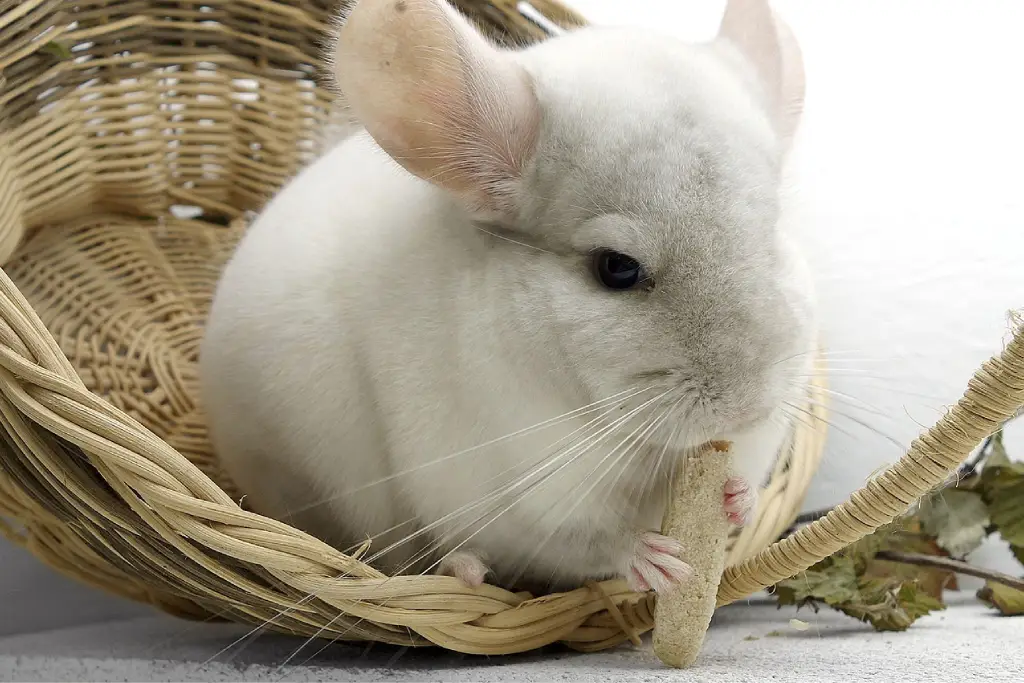Just like pretty much all rodents, chinchillas need to chew on things to keep their teeth at a healthy length. They love to chew on wood, but not all kinds of wood are good for them. So, which types of wood can you safely give your chinchilla?
Kiwi, ash, and bamboo are safe woods for chinchillas. Cherry, cedar, and wood from treated trees are not safe for chinchillas. Safe wood for chinchillas must be untreated or a designated toy from a store. The wood must be small and short enough for a chinchilla to hold onto and soft enough to chew.
To learn more about woods that are safe for chinchillas and why they are safe, keep reading. We will also talk about the types of wood that are not safe for your chinchilla.
Safe Woods
Here is a list of woods that have been deemed safe to give to chinchillas:
- Hazelnut
- Kiwi
- Apple
- Pear
- Bamboo
- Blackcurrant
- Blackberry
- Elm
- Yuca
- Ash
- Ocotillo
- Arbutus
- Hawthorne
- Mulberry
- Rosehip
- Dogwood
- Quince
- Kiln-Dried White Pine
- Willow (not White-Willow)
- Rowan Berry
- Pecan
- Manzanita
- Cholla
- Magnolia
- Aspen
- Cottonwood
- Sycamore
- Poplar
Even if these woods are considered to be safe for chinchillas to eat and chew on, they must be untreated in order to be safe. Sometimes wood, like toys, has been treated or has a coating on it. Treated wood might have paints, oils, glues, or other toxins on it that can harm your chinchilla. You can avoid purchasing treated wood for your chinchilla by checking the labels of wooden items you purchase.
Organic wood is best. If you live near the woods or have a tree in your yard and know that the area isn’t treated with chemicals, identify what trees are in the area and cut some wood off of safe trees and give it to your chinchilla.
Unsafe Woods
The following list has some of the types of wood that have been deemed unsafe for chinchillas.
- Crabapple
- Broadleaf
- Birch
- Chestnut
- Medlar
- Plum
- Lime Tree
- Madrone
- Sumac
- Sequoia
- Grapefruit
- Cedar
- Almond
- Orange
- Tallow
- Juniper
- Cherry
- Oak
The bottom line is that some types of wood are just bad for your chincilla. They can be toxic for them, make them feel sick, or are bad for their dental health. Because there are so many different types of wood that are safe for your chinchilla to chew on, there is no reason for you to give them wood that is unsafe.
Additionally, if you see any lichen on the wood you are preparing, do not give it to your pet! Just throw it away. Lichen is an organism that grows on wood and other surfaces, and it can be detrimental to the health of your chinchilla.
What Makes Wood Safe to Give to Chinchillas?
The wood that you give your chincilla needs to be small enough for them to grab ahold of so that it can gnaw on it. A good length for this is about 5 inches. The wood can come in form of twigs or broken-up bits of larger pieces of timber.
The wood must also be soft enough that your pet’s teeth can meet the surface of the wood without breaking. There are a few ways to ensure this, which will be discussed later.
Make sure that the wood that you provide your Chinchilla is not toxic. This means that you likely need to give them organic, real wood. You can either prepare the wood you present to your pet yourself and be cautious of which woods you are using, or you can purchase a piece of wood meant for chinchillas to chew on at your local pet store. Both of these options are great.
How to Prepare and Present the Wood

If you give wood to your chinchilla that you found and didn’t buy, make sure to prepare it properly. To do so, cut it up into small pieces, boil it in water for 15-20 minutes, rinse it, then scrub it. After scrubbing the wood, let it air dry on a towel. When it is completely dry, it is ready to give to your chinchilla.
This process will disinfect and soften the wood so it is safe to chew on. It will also remove the tannins found in the wood. It is important that all tannins are removed from the wood before you giv it to your chinchilla, as they can poison their kidneys and intestinal tract.
Tips for Putting Wood in a Chinchilla’s Cage
Any of the types of wood that are considered safe for chincillas can be used to cover the bottom of your chinchilla’s cage so they don’t have to stand on mesh wire. However, pine shavings are most commonly used because it is a safe wood for chinchillas. Plus, if the wood is shaved, your chinchilla likely won’t pick it up and chew on it.
If you want your chinchilla to be able to chew on wood at any given time, simply put a few pieces of a safe wood in the corner of their cage or where they will be able to easly see it. When the wood is gone, put another few pieces of wood in their cage.

However, wood doesn’t need to be the only thing that you put in your chinchilla’s cage. If you want to give your chinchilla a comfortable place to sleep, put a hammock, bed, or piece of fabric somewhere in the cage. However, make sure that the hammock, bed, or piece of fabric that you put in the cage is made out of fleece. If what you put in the cage isn’t made of wood or fleece, your chinchilla will chew on it and tear it up.
Overall, there are many different types of wood that are safe for your chinchilla to chew on so they can keep their teeth at a decent length. This is great, as it allows you to give your chinchilla a variety of woods to chew on. However, if your chinchilla is pawing at its mouth or isn’t eating, it might have a splinter in its cheek or mouth, which can be extremely painful.
Recent Posts
It is no secret that furry little chinchillas are widely considered to be among the cutest of animals alive. Their soft and thick fur coats make them look more like a fuzzy pillow than an animal! One...
Are you looking for things to feed your little friend? If you are thinking about putting spinach in your guinea pigs diet, but aren't sure whether it is the right source of nutrients you have come to...

